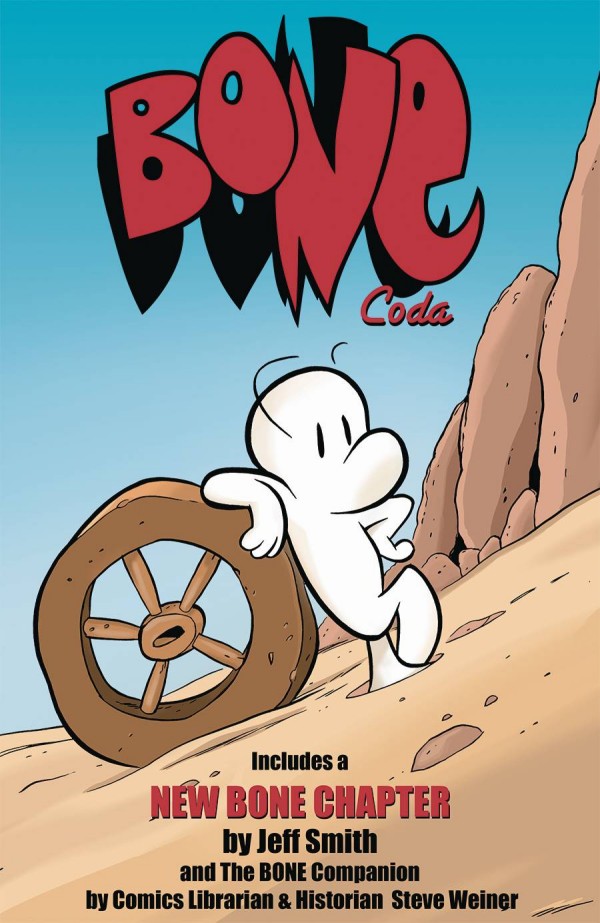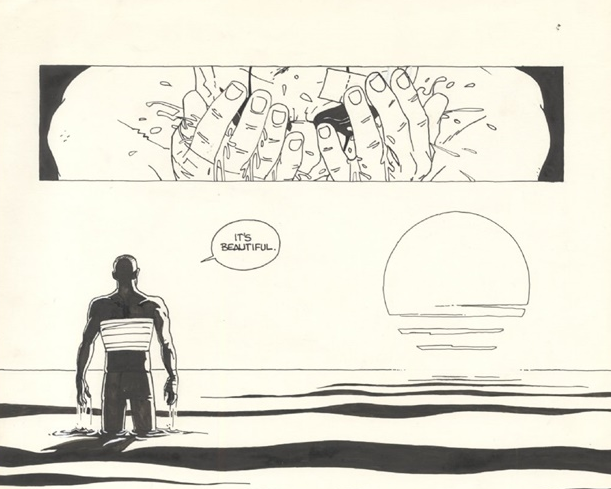At the beginning of Ragnarök Volume 1: Last God Standing, Simonson shows brief glimpses of Thor, in the prime of his power, fighting a giant serpent. It’s only the second page of the book and Simonson is giving us the big hero shot. A double page spread that’s all about the power and glory of Thor and Mjolnir, his mighty hammer, Simonson is showing the power of a god at his greatest. It’s truly a moment of myth and legend. And it’s the last time that he shows anything that resembles a god because Thor dies in that moment, sacrificing himself to win this epic battle. Walter Simonson is not telling the story of a god and hero in this version of Norse mythology. The story he’s going to tell with this Thor is one of death and the end of the age of gods.
Walter Simonson is no stranger to creating myths so on first glimpse his Ragnarök looks to be some nostalgic vanity project that’s trying to cash in on recent trends. The Hollywood pitch for this comic would be “zombie Thor” as Simonson creates a new Thor and a new twilight for the Norse gods. Back in the 1980s, his own legendary run on Marvel’s Thor was one giant tribute to Stan Lee and Jack Kirby. And in the early 2000s, Simonson followed in Kirby’s epic shadow with one of the only New Gods stories that captured the essence of Kirby’s work without merely repeating it. The spirit of those past godly comics and their creative antecedents still shape the stories that Simonson is telling even as he moves out of the shadow of the creators who came before him.
And let’s be honest for a moment here, Simonson had to know what he was doing when he decided essentially to tell another Thor story. Stick around comics long enough and sooner or later you’ll wish that your most beloved writers and artists will return to the characters that they created pure magic with. Who wouldn’t want Walter Simonson to write and draw a Thor comic again? So is it weird that he’s not telling stories about the Thor everyone knows now and is drawing a character who looks more like an orc out of a Tolkien movie than Jack Kirby’s golden-haired god?
This modern Thor is a man out of his time. Having apparently “perished” in that battle with the serpent, a black elf finds him sometime later, already after the twilight of the gods. This Thor is a shade of his old self, a remnant of a godly pantheon long gone. Looking more like some undead zombie, Thor’s journey now is trying to find something to live for and that ends up being the black elf’s cursed daughter. Vowing to protect the young girl, Thor sets out to discover the god who tried to use assassins to kill the god of thunder once and for all.
This introduction to a new vision of a very familiar god allows Simonson to tell a kind of story that he really hasn’t before, the story of a god and a hero in the twilight of his own life and trying to leave something worthwhile behind. The stench of mortality and death hangs heavy in these pages as Simonson explores legend and legacy. As it would be a compliment to say that this Thor looks like death warmed over, Thor is on his own quest that includes revenge and retribution. The character has something to prove to himself and to his world and maybe there’s even a bit of that need in Simonson himself, to prove that he can still create a timeless classic.
Able to draw stunning images since he joined Archie Goodwin to tell the story of Manhunter in the pages of Detective Comics, Simonson’s art has mellowed a bit with age. Rather than dazzling his reader through layout and composition, Simonson seems more concerned with telling his story through his character’s faces. Whether it’s the determinedly haggard face of a god long past his prime or the mournful eyes of two dark elves who have lost a wife and a mother, Simonson uses these drawings of his characters to reveal their true stories and struggles even as they’re fighting trolls and demons.
Over time, the artist has really developed a lovely balance of the subtle and the bombastic. Simonson’s line has always been an intriguing one. On its own, it’s not as particularly powerfully graceful as it once was but put two, three, or more of them together and his images become these wonderfully drawn moments in time. They can either be small moments, personal and intimate, or they can be huge, violent and powerful. It allows him to tell the story of the godhood and of humanity contained in this once mighty character.
Well before Ragnarök was first published, Walter Simonson was already a well-deserved comics legend. With his latest work, Simonson is proving that he can still hang with the young punks, creating a story that’s about being a god but also about being a man. There’s an aged assuredness to Simonson’s word and line that lulls his reader into the book before he can drop an image or a sequence that is just as great as any bombastic image that he drew in the 1970s or 1980s. Too many creators from those periods have gone missing or are producing sub-par comics but Simonson’s work is as wonderful as it’s ever been.
Ragnarök Volume 1: Last God Standing
Ragnarök Volume 2: The Lord of the Dead
Written and drawn by Walter Simonson
Colored by Laura Martin
Lettered by John Workman













